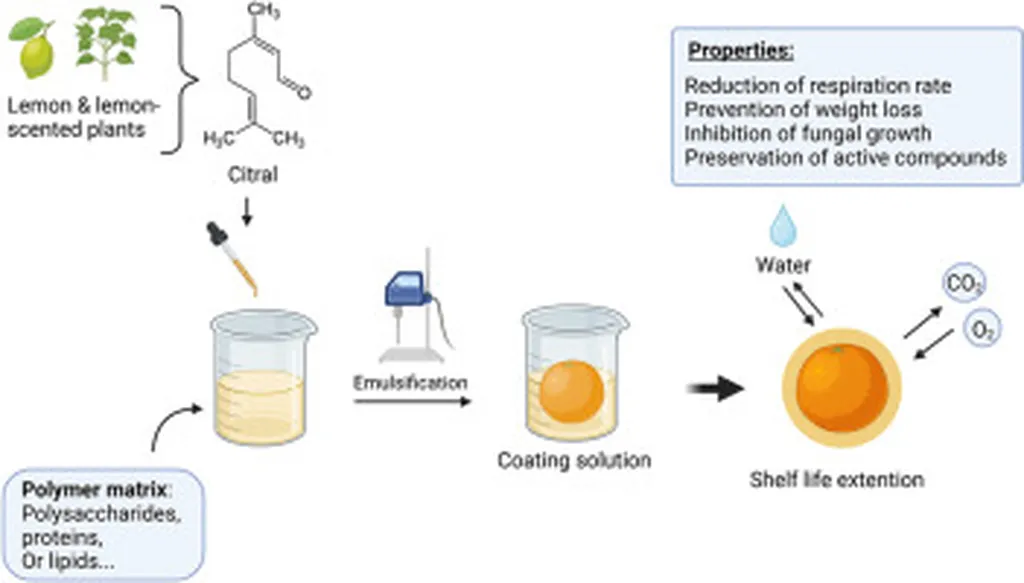In the world of citrus farming, postharvest diseases are a persistent challenge, leading to significant economic losses and food waste. Traditional synthetic fungicides, while effective, pose risks to human health and the environment, driving the search for safer alternatives. A recent review published in the *Journal of Agriculture and Food Research* (translated from Arabic as *Research Journal of Agriculture and Food*) sheds light on a promising natural solution: citral, a compound found in the essential oils of citrus and lemon-scented plants. The review, led by Houda El Kahia of the African Sustainable Agriculture Research Institute (ASARI) at Mohammed VI Polytechnic University (UM6P) in Morocco, explores the potential of citral as an antifungal agent to control postharvest diseases in citrus fruits.
Citrus fruits, with their high moisture and nutrient content, are particularly vulnerable to fungal infections during storage. Pathogens like *Penicillium digitatum*, *Penicillium italicum*, and *Geotrichum candidum* cause green mold, blue mold, and sour rot, respectively, leading to reduced shelf life and substantial economic losses. “The search for safer, more sustainable methods to control these diseases is imperative,” El Kahia emphasizes. “Natural products, particularly essential oils, offer a promising alternative to synthetic fungicides.”
Citral, a potent antifungal compound found in citrus essential oils, has shown effectiveness against these major pathogens. However, its application is not without challenges. “Citral faces issues such as volatility, instability, low water solubility, and potential phytotoxicity on fruit skin,” El Kahia notes. “Addressing these challenges is crucial for its successful implementation in postharvest disease management.”
The review highlights recent advancements in incorporating citral into coating formulations to mitigate postharvest losses and preserve citrus fruit quality. These innovations could revolutionize the agricultural industry, offering a safer, more sustainable solution to a longstanding problem.
The commercial implications of this research are substantial. By reducing postharvest losses, citral-based treatments could enhance the profitability of citrus farming, benefiting growers and consumers alike. Moreover, the shift towards natural, sustainable solutions aligns with the growing global demand for environmentally friendly agricultural practices.
As the agricultural industry continues to evolve, the findings of this review could shape future developments in postharvest disease management. By harnessing the power of natural compounds like citral, farmers and researchers can work together to create a more sustainable, profitable future for citrus farming. The journey towards safer, more effective postharvest treatments is just beginning, and citral may well be a key player in this exciting new chapter.

